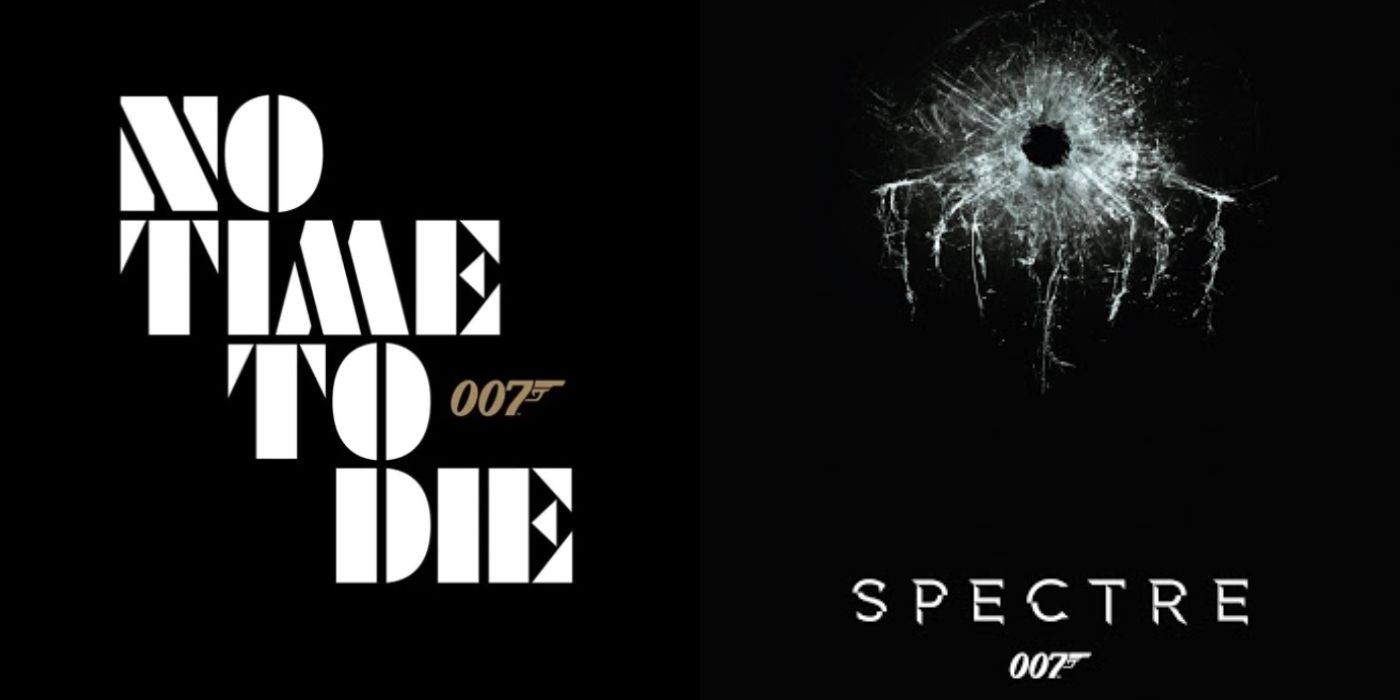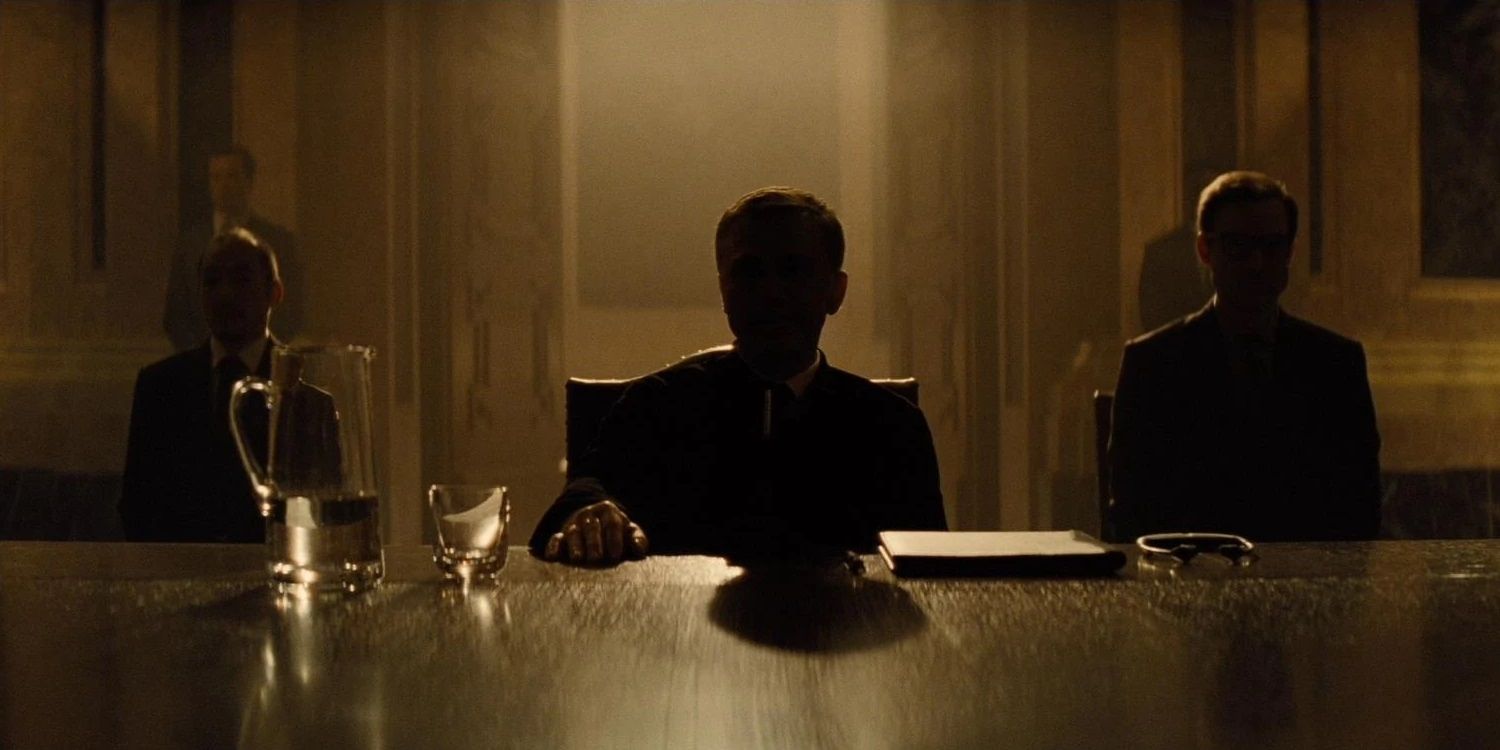
As the latest James Bond movie, No Time to Die, has had its release date pushed back yet again, 007 fans are wondering if they’ll ever get to see the gentleman spy’s latest adventure. Cary Joji Fukunaga’s movie faces more pressure than usual because it has to pull the franchise out of the slump that the previous film, Spectre, put it in. One of Spectre’s most glaring flaws was its attempts to tie all of Daniel Craig’s Bond movies together in a shared continuity.
When Bond tracks down Blofeld in Spectre, the investigation needlessly ties him to the Quantum organization from Quantum of Solace. Then, when he finally finds him, the scarred megalomaniac tells him, “I’m the author of all your pain,” revealing an elaborate, years-in-the-making plan whereby he was the mastermind behind the deaths of characters like M and Vesper Lynd. Since this clearly wasn’t planned from the beginning, it doesn’t really line up and has a “Somehow, Palpatine returned” air about it.
RELATED: No Time To Die May Reshoot Scenes Due To James Bond's Outdated Gadgets
This forced continuity was seemingly a response to the MCU’s success with serialized storytelling, but serialization is crucial to how Marvel’s superhero stories are told on the page. The sprawling cosmic worlds of the Marvel universe and the dozens of Avengers now on the team’s roster open it up to long-running storylines involving a variety of characters. But the Bond franchise is just about a spy who goes on a mission, cracks the case, gets the girl, then does the same thing over and over again. Its movies follow a loose formula and the fun comes from how that formula is executed. Spectre tried to upend the formula and position itself as a chapter in a larger narrative, but why? That undermines Bond’s legacy. If it ain’t broke, don’t fix it.

Going back to Ian Fleming’s source material, James Bond stories have always been standalone adventures that could take place anywhere on the timeline of Bond’s career and it wouldn’t make much of a difference. In the spirit of Fleming’s novels, the Bond movies have always been episodic installments with no connective tissue besides recurring characters like Q and Moneypenny. The focus of each movie or novel is the mission at hand; there are no overarching narratives and very little is known about Bond’s life outside his work with MI6.
Spectre wasn’t the only movie of the Craig era to imply that each one directly follows on from its predecessor – after the opening car chase in Quantum of Solace, Bond pops the trunk to reveal Mr. White, who he was tracking down at the end of Casino Royale – but Spectre was the first to make it the focal point of the plot. In its middle act, Spectre becomes more preoccupied with trying to make its unnecessarily complicated story work than actually entertaining the audience with one-liners and action. The result is one of the worst Bond movies, and No Time to Die is doomed to the same fate if it doesn’t buck this trend and get the franchise back to its roots.
Each Bond movie needs to be a self-contained spy thriller with plenty of high-octane action and escapist fun. The less complicated the plot is, the better – it’s just there to get 007 from one explosive action sequence in an exotic country to the next explosive action sequence in a different exotic country. With the story of a retired 007 being reluctantly called back into action to face a sinister villain played by Oscar winner Rami Malek, No Time to Die is primed to stand on its own – but only if it can let go of almost everything from Spectre.
No Time to Die is bringing back some cast members from Spectre – including Christoph Waltz as Blofeld and Léa Seydoux as Dr. Swann – suggesting that it will indeed follow on from that movie’s story threads and the threads it forced between Craig’s previous Bond movies. With any luck, the connections to Spectre will just be a part of the setup. The movie can clear up the franchise’s now-muddled timeline in its first act and then become its own thing, sort of like Thor: Ragnarok did with The Dark World’s forgettable story threads.
Pigeonholing the Bond movies in a linear continuity with connected elements seriously limits the creative freedom of the filmmakers. James Bond is one of the few franchises that a director can jump on at any point and provide their own take on the character and his mythos. Every filmmaker has their own vision for a Bond movie, and given the opportunity by Eon, no matter what happened in the previous movie or what’s going to happen in the next movie, they can translate that vision to the screen because each movie stands alone. If they have to fit in with an ongoing storyline – paying off previous teases and setting up future sequels – then that will cease to be the case.

